We visited the National Zoological Garden (NZG), also known as the Pretoria Zoo, to meet these fascinating creatures. Here, a breeding programme initiated in the 1990s by NZG and the South African National Biodiversity Institute (SANBI) is just one piece of the puzzle when it comes to safeguarding the future of this species.
Cape vultures classed as vulnerable
Cape vultures used to be listed as endangered in the International Union for Conservation of Nature's (IUCN) Red List of Threatened Species, and in 2021 were 'down-listed' to vulnerable. We're not out of the woods, but this does signal the success of work carried out by NZG alongside organisations like the Endangered Wildlife Trust (EWT) and wildlife rehabilitation centres such as VulPro.As Africa's only initiative of this kind solely focused on vultures, Kerri Wolter has been at the helm of VulPro since 2007 and works in collaboration with NZG, taking over the process when the time comes for vultures that are bred and reared at the zoo to be released into the wild. VulPro has facilities in Hartbeespoort, just north of Johannesburg, and at Shamwari Private Game Reserve in the Eastern Cape.
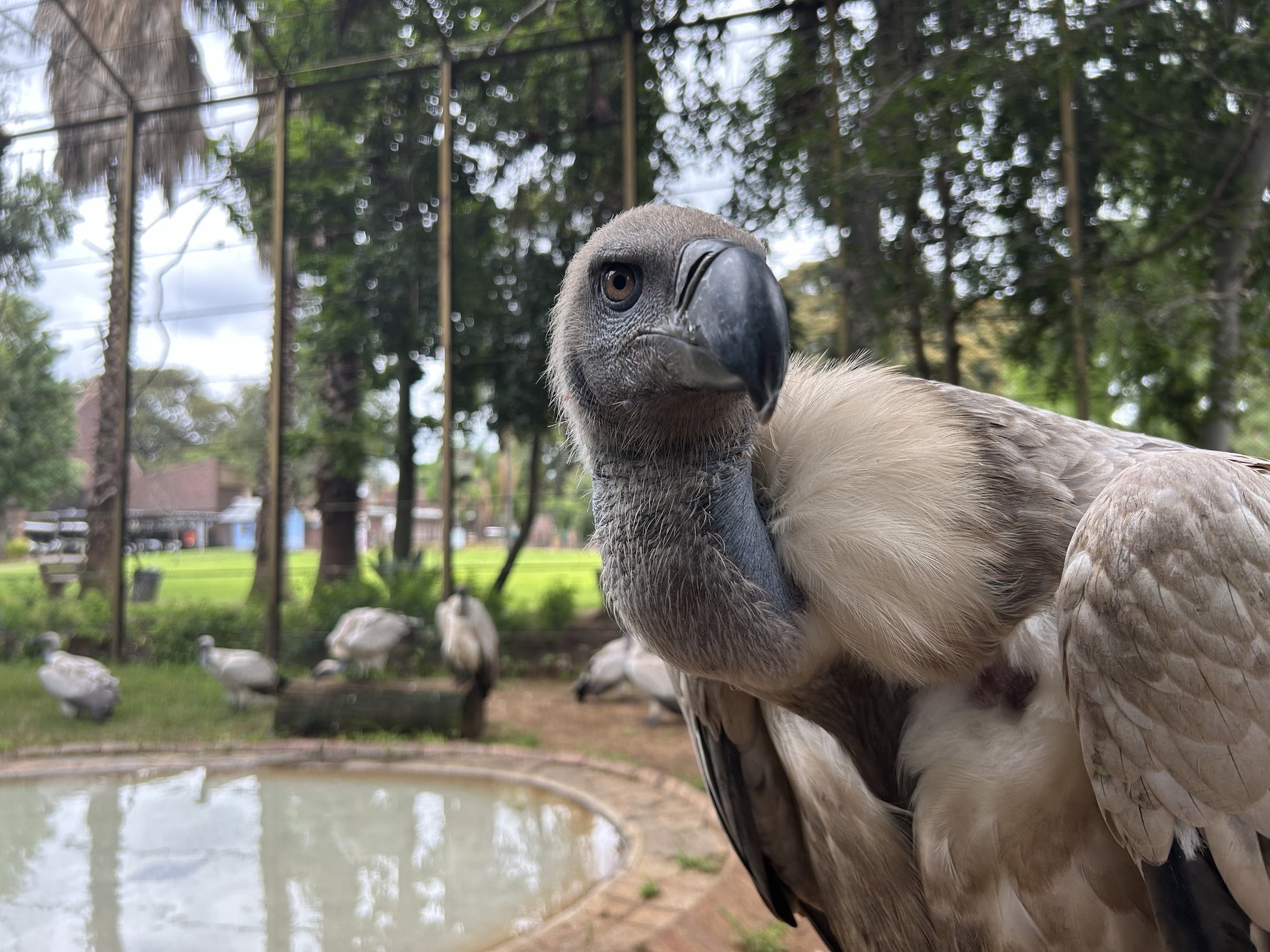
The status of Cape vultures, judged by IUCN as a vulnerable species, still means their population is declining and, along with species that fall under the critically endangered and endangered camps, they are considered threatened. Our national bird, the blue crane, as well as the black rhinoceros, cheetah, riverine rabbit, and roan antelope are among the many other local species facing similar threats to their existence. As for the vulture family, the hooded vulture, white-backed vulture, and lappet-faced vulture are also under threat of extinction in Africa.
Breeding programme at NZG
Visiting the grounds of Pretoria Zoo on Fri, Jan 17, 2025, we spoke to Tracy Rehse, NZG's director of the animal collection and conservation department. The zoo currently looks after 35 Cape vultures and, of these, five pairs breed regularly. About three to four birds are hatched each year. A bigger enclosure is being built in the hopes of increasing this number. In the wild, the Cape vulture's life span ranges from 15–25 years, though they may live to the age of 70 in captivity.No one needs to be told that a zoo is not the Cape vulture's natural habitat. The gothic cage they're in may be a heritage structure (and it really is quite beautiful), but seeing these birds' wingspan quickly lets you know what they're made of – and made for: flying. While the purpose of breeding these birds is to release as many of them as possible into the wild, conservation work often entails compromises. There's no perfect way to reverse the effects of endless urban expansion on the natural environment, but it matters that we keep trying.
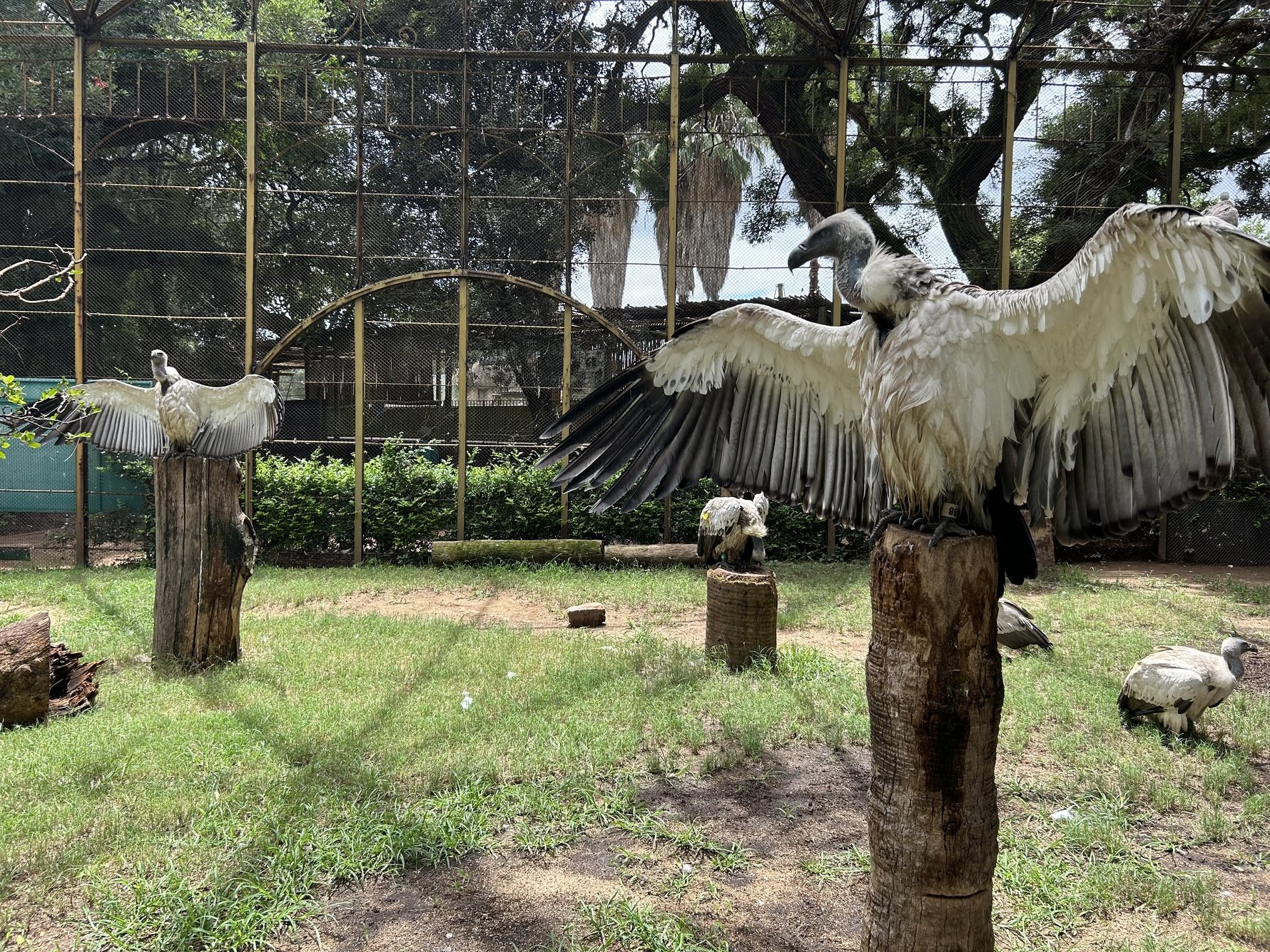
Threats posed to Cape vultures in the wild
Cape vultures are found throughout South Africa and in neighbouring countries, all the way to sub-Saharan Africa. "Our main problem is poisonings," Rehse says, largely a byproduct of poaching. Vultures make no distinction – whether an animal is killed by poachers or by a natural predator, where there's a carcass, you can be sure that vultures will soon follow. As circling vultures doing their 'dine and dash' routine risks exposing the activities of poachers, carcasses are deliberately laced with poison to prevent them from taking flight again. This collateral damage extends not only to vultures, but also to any species, including small carnivores that are inclined to tuck into these soiled remains. There have been several cases of mass poisonings at rhino and elephant poaching hotspots like the Kruger National Park.But this is a complex web to untangle, as is always the case when we're dealing with matters of ecology. Rehse continues, "And then you get lots of electrocutions from the birds flying into power lines. There have been some drownings as well, when the birds go into water reservoirs, for example, to get water and then can't get out. They're also used for traditional medicines and the traditional medicine, or muti, trade. Another thing that's been listed as a cause for decline is just the lack of carcasses on the velds. Because of human encroachments, there's not that much food around on the veld any more."
Nature's clean-up crew
The last point is significant. Vultures are obligate scavengers, subsisting almost entirely on carrion. In doing so, they play an important role in ecosystems as a sort of refuse service; removing some of the risks associated with dead animals like the spread of diseases and bacteria. The unique dietary preferences of vultures have led to them developing a strong gut, with highly acidic stomachs that can tolerate what most other animals cannot.'Vulture restaurants' are one of the ways conservationists are stepping in to restore the balance, attempting to supplement what the local ecosystem can't sustain. ValPro's HQ in Hartbeespoort serves up fresh meat to vultures in this manner, and there are a surprising number of these (around 130 at the time of writing) dedicated feeding sites around the country.
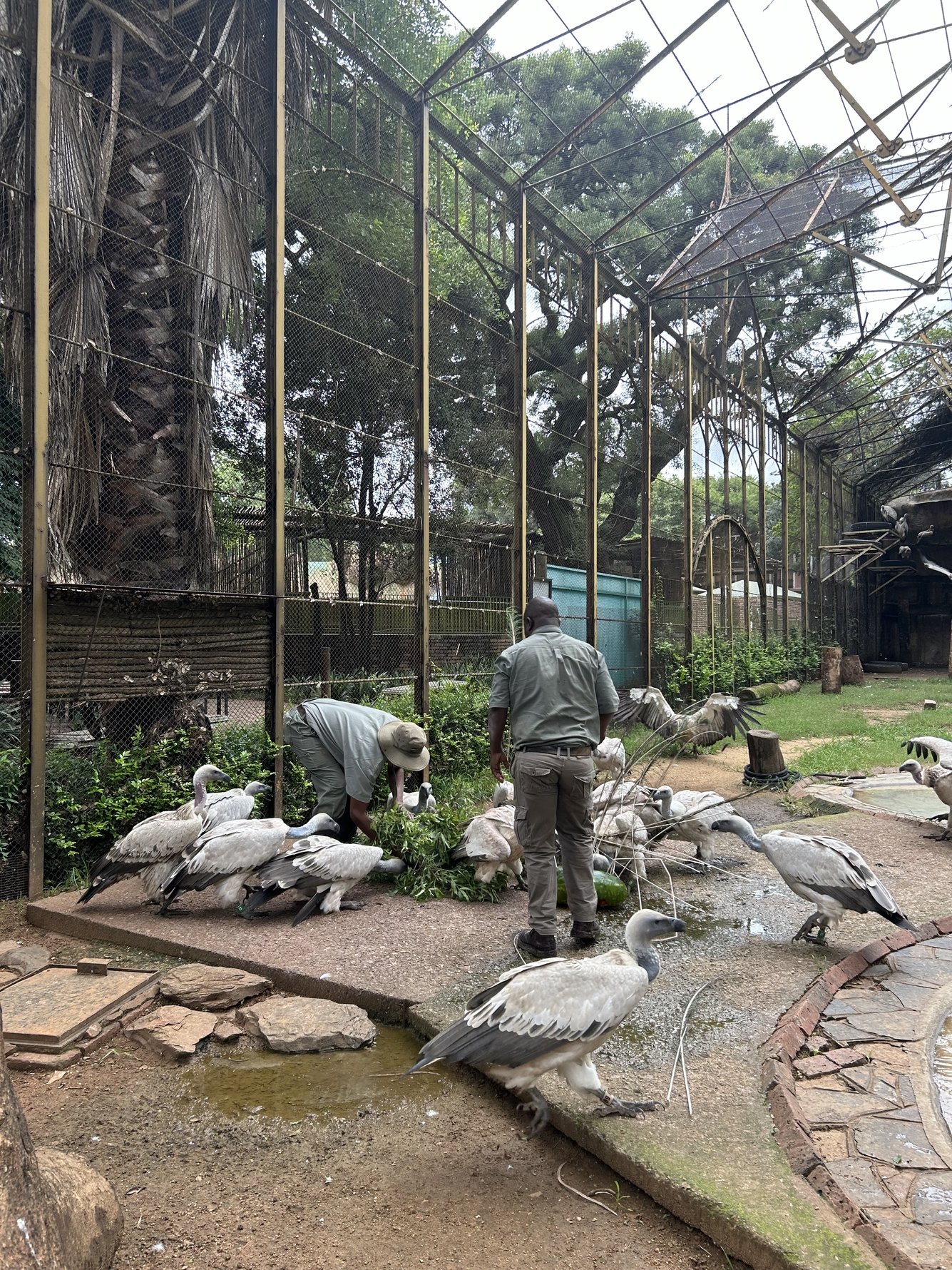
Back to the zoo. It wasn't feeding day when we visited, but it certainly was a feeding frenzy. Senior conservation officers Aubrey Tselapedi and Usiah Selemale brought in a watermelon shell filled with red meat and adorned with peacock feathers. Such decadence would hardly be out of place on a medieval banqueting table. This gave us the chance to see the vultures close up to take in the sheer size of them. Fun fact: a group of vultures is known as a 'venue' and when seen circling in the air together, it is called a 'kettle'.
Readying vultures for release
Three vultures from NZG joined a larger VulPro release party of 21 birds in May 2024. Of these, one has particularly taken the freedom in his stride with tracking data for G26481 – Khaki Black 83 – showing wide-ranging travel across South Africa and Lesotho. The vulture dubbed G37042 – Yellow Black E12 – managed to remove its tracking device, so its current status is unknown. Sadly, the third of the trio, G26481 – Khaki Black 91 – sustained a severe wing injury and was euthanised in June 2024.No matter how careful the preparations, vultures bred in captivity may lack some of the survival instincts of their wild-born siblings. Finding food, integrating into existing populations, and vulnerability to predators can pose risks.
Wolter tells us, "Preparing vultures for release is a very thought-out process to make sure they can survive and thrive in the wild. First, we conduct thorough health assessments to ensure they’re in top physical condition and free from any illnesses or injuries. Then, they go into our large flight enclosures, where they can build their strength and stamina by flying regularly. We also focus on socialisation, encouraging them to interact with other vultures to develop natural behaviours. Finally, we acclimatise them to the release site environment so they’re familiar with the conditions, like the weather and feeding opportunities." Vultures released into the wild in this manner are fitted with tracking devices to monitor their movements.
A species vital to ecological balance
Because vultures pair up and breed together for life, the stakes are that much higher: the death of one vulture has a knock-on effect on future generations. If one partner dies, it's rare for the other to find a second mate. This makes breeding a vital part of broader efforts to look after South Africa's vulnerable population of Cape vultures. According to a Multi-species Biodiversity Management Plan for Vultures published in 2024, the aim is to recover vulture populations to acceptable levels by 2033.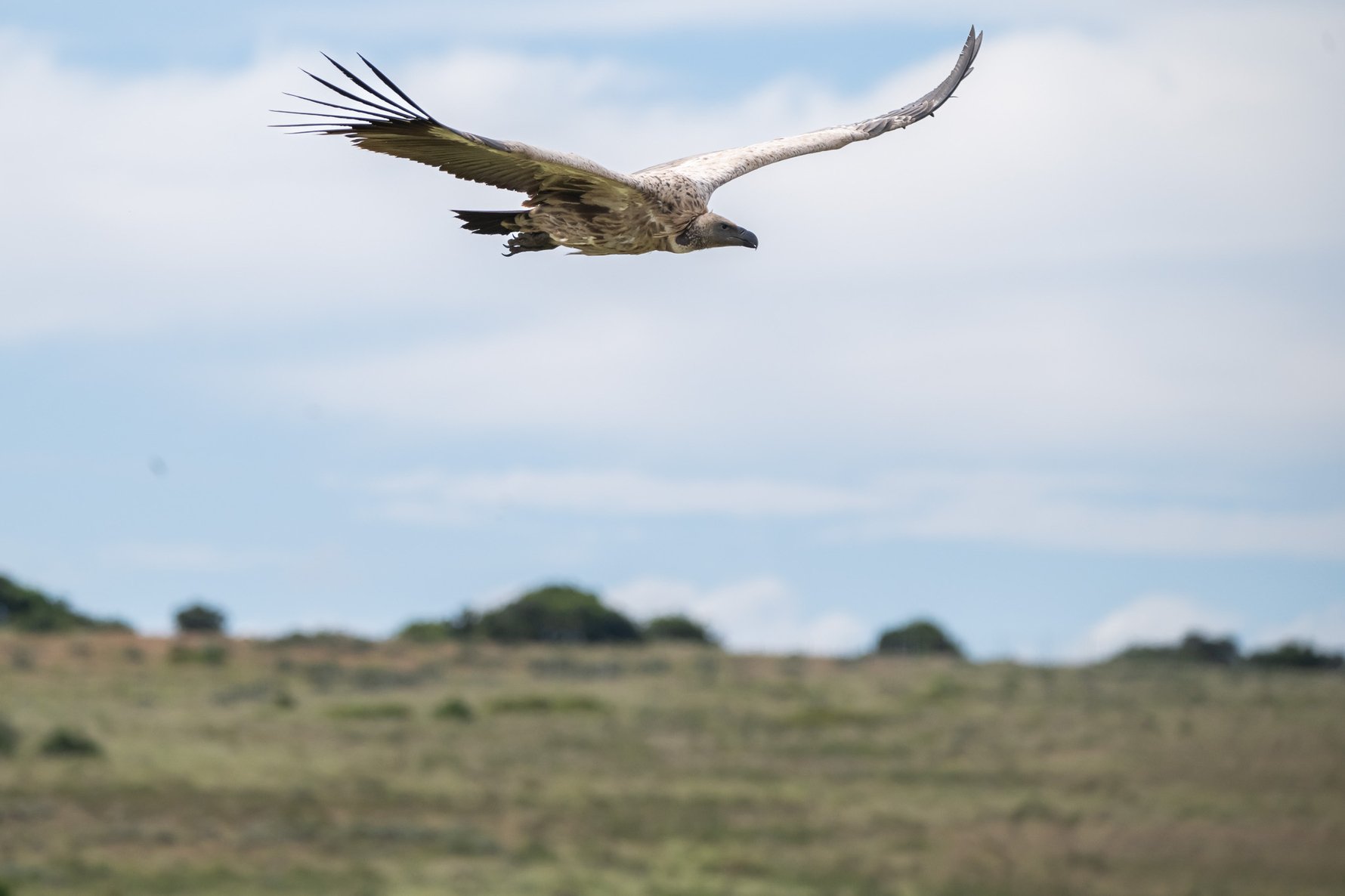
Wolter says, "Protecting vultures isn’t just about saving a species – it’s about maintaining the health of entire ecosystems. The knock-on effects of losing vultures would impact not just wildlife, but also human communities." Thus, from research to breeding, rehabilitation, and release work, vulture conservation cannot be separated from broader environmental protection. And, says Wolter, "Watching them soar through the skies is breathtaking. There's something truly magnificent about their ability to navigate such vast distances with such grace."
Helping the cause
If you'd like to pledge your allegiance to a Cape vulture or another of NZG's fabulous animals, the Adopt a Wild Child initiative is one way the public can support the zoo's wider conservation efforts. Becoming a Citizen Scientist is another. Assist researchers in tracking vulture movements, nesting sites, and behaviour patterns by logging your vulture sightings on iNaturalist. Or simply visit the Cape vultures at Pretoria Zoo and nurture a newfound appreciation for these mighty, oft-misunderstood creatures.National Zoological Garden (232 Boom Street, Pretoria) is South Africa's national zoo and is open seven days a week from 08:30 – 17:30.


_m.jpg)
_m.jpg)
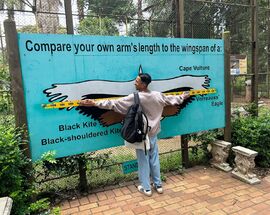


Comments